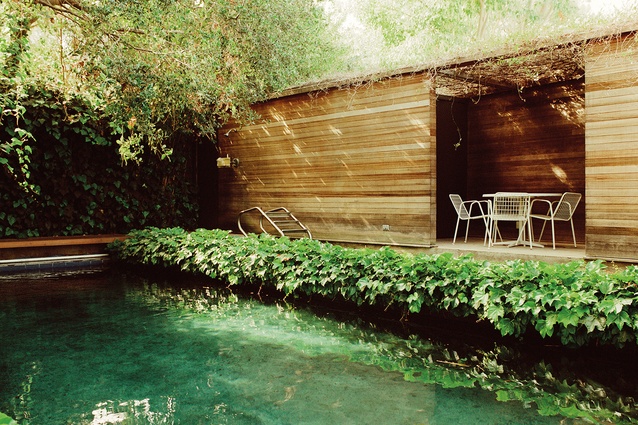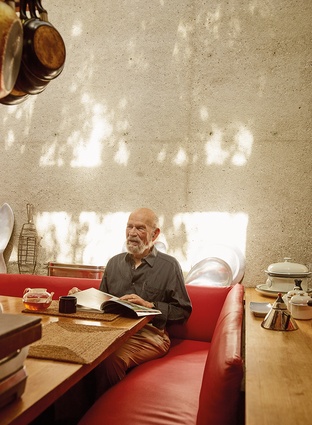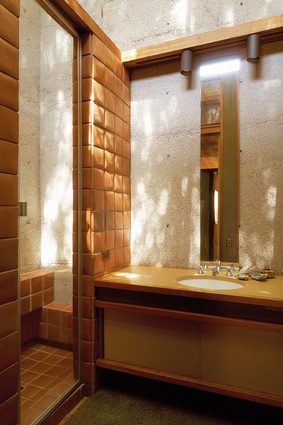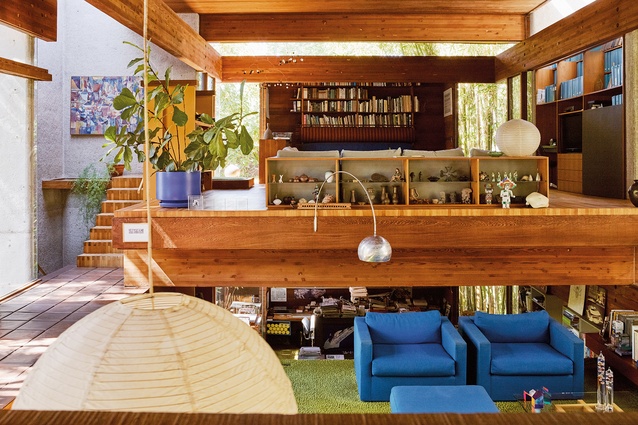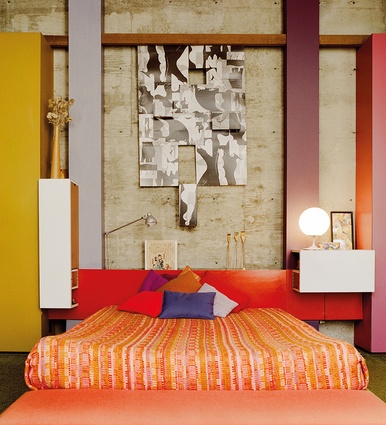California soul: Ray Kappe House
For her latest book, Interior Portraits, photographer Leslie Williamson stepped into the Pacific Palisades home of architect Ray Kappe, only to find that this inspiring mid-century haven was built above an underground spring.
Since the early 20th century, the Los Angeles area has been a hotbed of influential and innovative architecture. Frank Lloyd Wright, Richard Neutra, Rudolph Schindler, Greene and Greene, Thom Mayne, Frank Gehry, not to mention the architects of the Case Study House program.
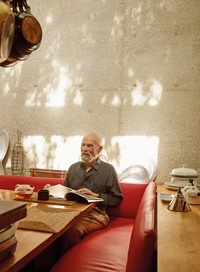
The list of architects that made a mark here is daunting. Ray Kappe (b. 1927) sits easily among these luminaries, yet his place in this group is singular and distinctive. Best known for his expansive glass-and-wood homes whose integration with the landscape epitomises California living, his impact as a pioneer of green architecture and as an educator and innovator in the world of architecture education has also been remarkable.
In fact, after being the founding director of the architecture department at California State Polytechnic University at Pomona in 1968, Ray decided to break away in the belief that there was a better way to teach and learn.
With a group of colleagues and students, he founded a new school in 1972, SCI-Arc, or the Southern California Institute of Architecture, that was dedicated to a more experimental and hands-on learning environment, as it continues to be to this day.
The first time I showed up on his doorstep was in 2009. I was in the midst of my first book and was thrilled to photograph his home for it. My experience there that first shoot was pivotal for me, and it is etched in my memory not only for the joy I felt shooting their home (it is so much better in person!) but also because of the chats I had with Ray’s wife, Shelly, an architecture educator and writer in her own right. Talk about a formidable design couple! Their combination – Ray with his deep, sonorous voice matched with Shelly and her dancing, kind eyes and effervescent and curious personality – had me completely charmed and inspired by the two of them and the life they had created.
The fact that their chapter ended up being cut from the book at the last minute has always saddened me (the cruelty of a limited page count). Of course, now I realise it was some sort of divine intervention because this book would not be complete without them.

Returning to photograph a home numerous times over the years is a special gift. Houses, like people, are living a life and I was excited to reacquaint myself with not only Ray and Shelly, but also their home. Memories of my first visit flooded back the second I heard the sound of trickling water as I walked up their front steps.
I had forgotten that their home was built over an underground spring that surfaces halfway up their property near the front door. It was one of the challenges of the site that inspired Ray’s brilliant design of anchoring the structure on six concrete towers, so the house looks as if it is tiptoeing up the hill.
Arriving at the front door brings you directly under the main floor of the house. The sensation of it hovering overhead makes walking into the Kappes’ home feel a lot like entering a space ship, and the impact (I imagine) is just as stunning. Ascending up the central staircase past Ray’s ground-floor studio and into the main living area, the house blooms out into an expansive, multilevel living space.
This home is the definition of most people’s fantasies of California living. Mine included. Its main living areas – upper living room, lower living room, dining room, and kitchen – are all open to each other yet afford little corners that feel cozy and private.
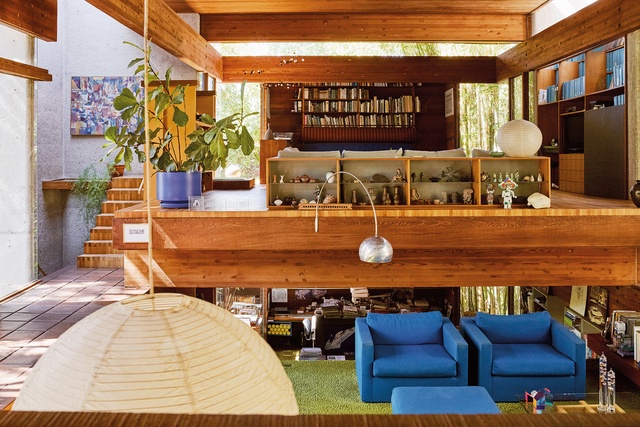
The way light plays and the integration of the home with nature is equally alluring. The two wings of sleeping quarters, the kids’ rooms at the back of the house and the master bedroom toward the front feel like very private satellites that can either exist independently or integrate into the whole of the house when desired: a detail that seemed doubly important as Ray is more of an early bird and Shelly a night owl.
They had not changed a bit in the years that had passed since my first visit, and Ray and I chatted as I took some portraits of him in the kitchen having his morning tea. He shared stories about Richard Neutra’s temperament (fascinating to hear) and his one experience working with photographer Julius Shulman which re-illustrated just how integral a part Ray has been to the architectural fabric of Los Angeles for over sixty years. He is certainly an éminence grise now.
Just a few days before I was there, Ray and Shelly had welcomed a group of Australian architecture students to tour the house. Tours are a common occurrence for them, living in an award-winning architectural masterpiece as they do.
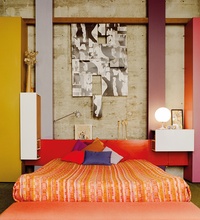
The entire time I was there this second visit, I looked for subtle changes to the house but could only find a few. The royal-blue upholstery seemed a bit more vibrant — no doubt they had gotten new cushion covers made — and Ray’s studio had a laptop computer that I didn’t think was there before. But otherwise it felt virtually the same.
As I was finishing up, Shelly emerged from the master bedroom and we talked about the European houses I had shot for my second book. She and Ray had been to practically every single house on their family vacations and had created complete slide shows of each so they could teach the houses to their students at SCI-Arc. We are talking the 1970s and 1980s, when Ray, Shelly, and their three kids would go and knock on a door and ask for a tour from the owners.
She pointed to carousels of slides and asked me what I thought the best way would be to archive them. I swear, I wanted to have a slide show right then and there. I said something about their needing to be scanned, but as I drove away that day (and many times since), I fantasised about archiving these slides with them myself. Can you imagine the stories?
This story and images first appeared in Interior Portraits: At Home with Cultural Pioneers and Creative Mavericks by Leslie Williamson (Rizzoli New York/David Bateman in New Zealand), RRP $119. Excerpt reprinted with permission.

